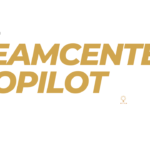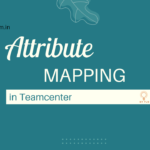In the dynamic landscape of engineering and product design, collaboration and efficiency are paramount. With the ever-increasing complexity of projects, seamless integration between various software platforms becomes essential for streamlined workflows and enhanced productivity. One such integration that has gained significant traction in recent years is the fusion of Nx, a powerful computer-aided design (CAD) software, with Teamcenter, a leading product lifecycle management (PLM) system. This integration offers a comprehensive solution for managing product data, design, and development processes within a unified environment. In this blog post, we’ll delve into the benefits of integrating Nx with Teamcenter and explore the steps to achieve a successful integration.
Table of Contents
Understanding Nx and Teamcenter
Before diving into the integration process, let’s briefly discuss Nx and Teamcenter:
Nx (formerly Unigraphics)
Nx, developed by Siemens Digital Industries Software, is a robust CAD/CAM/CAE software suite widely used in industries ranging from automotive and aerospace to consumer products and electronics. Known for its advanced modeling capabilities, simulation tools, and comprehensive design functionalities, Nx empowers engineers and designers to create innovative products with precision and efficiency.
Teamcenter
A Product Lifecycle Management (PLM) system such as Siemens’ Teamcenter manages product data and processes throughout the product lifecycle. It serves as a central repository for storing, accessing, and collaborating on product-related information, including CAD models, documents, bills of materials (BOMs), and change management data. Teamcenter facilitates cross-functional collaboration, version control, and ensures data integrity across distributed teams.
Benefits of Integrating Nx with Teamcenter
The integration of Nx with Teamcenter offers several benefits for organizations involved in product design and development:
1 Unified Data Management
By integrating Nx with Teamcenter, organizations can centralize their product data, eliminating silos and duplication of information. This unified data management approach ensures consistency, improves data accessibility, and reduces the risk of errors.
2 Enhanced Collaboration
Teamcenter’s collaborative capabilities combined with integrating Nx’s advanced design tools enable seamless communication and collaboration among multidisciplinary teams. Engineers, designers, and other stakeholders can work together efficiently, share feedback in real-time, and track project progress more effectively.
3 Improved Workflow Efficiency
Integration streamlines the design-to-manufacturing process by enabling seamless data exchange between Nx and Teamcenter. This integration minimizes manual data entry, automates repetitive tasks, and accelerates time-to-market for new products.
4 Version Control and Change Management
Teamcenter’s robust version control and change management functionalities ensure that all stakeholders have access to the latest product data. Engineers can track revisions, manage change requests, and maintain an audit trail of modifications, thereby reducing the risk of errors and ensuring compliance with regulatory requirements.
5 Optimized Product Development
By leveraging the combined capabilities of integrating Nx and Teamcenter, organizations can optimize their product development processes. From conceptual design and simulation to manufacturing and maintenance, the integrated solution enables end-to-end visibility and control, allowing teams to make informed decisions and iterate rapidly.
Steps to Integrating Nx with Teamcenter
Now, let’s outline the steps involved in integrating Nx with Teamcenter:
1 Assess Integration Requirements
Begin by assessing your organization’s specific integration requirements, including the desired data exchange workflows, security considerations, and customization needs.
2 Install Integration Modules
Siemens provides integration modules and connectors that facilitate seamless communication between Nx and Teamcenter. Install the necessary integration modules and configure them according to your organization’s requirements.
3 Configure Data Mapping
Define data mappings and synchronization rules to ensure consistency between Nx and Teamcenter datasets. This includes mapping CAD attributes, file structures, and metadata between the two systems.
4 Establish Workflows
Define and configure workflows for data exchange, approval processes, and change management between Nx and Teamcenter. Ensure that workflows align with your organization’s design and development processes.
5 User Training and Adoption
Conduct training sessions to familiarize users with the integrated environment and workflows. Provide comprehensive training on using Nx and Teamcenter together effectively, emphasizing best practices and productivity tips.
6 Testing and Validation
Before deploying the integration in a production environment, thoroughly test the integration to validate data exchange workflows, ensure data integrity, and identify any potential issues or bottlenecks.
7 Deployment and Maintenance
Once the integration has been tested and validated, deploy it in the production environment. Establish protocols for ongoing maintenance, monitoring, and support to ensure the smooth operation of the integrated system.
Conclusion
Integrating Nx with Teamcenter offers a powerful solution for organizations seeking to streamline their product design and development processes. By combining Nx’s advanced design capabilities with Teamcenter’s robust PLM functionalities, organizations can enhance collaboration, improve workflow efficiency, and optimize their product development lifecycle. With careful planning, implementation, and ongoing support, organizations can unlock the full potential of this integration to drive innovation and achieve competitive advantage in today’s fast-paced market landscape.
Read More Articles
Exploring the Power of Tiles in Teamcenter’s Active Workspace Client
Understanding the Contrast: Volume vs. Database in TC
Exploring TC: The Central Hub for Product Lifecycle Management
Understanding Item Revision in TC: A Comprehensive Guide
Unlocking Efficiency and Precision: Understanding Workflow Designer in TC
Understanding PLM (Product Lifecycle Management): A Comprehensive Guide
Demystifying BMIDE in TC: Empowering Effective PLM Solutions
Understanding Organizations in TC: Building Efficient Work Structures
Demystifying Datasets in TC: A Comprehensive Guide
A Step-by-Step Guide to Installing TC Software
Revealed Pseudofolders in Siemens TC: Simplifying Data Management for Engineers
Unlocking TC’s Potential: A Guide to Creating Custom Properties







